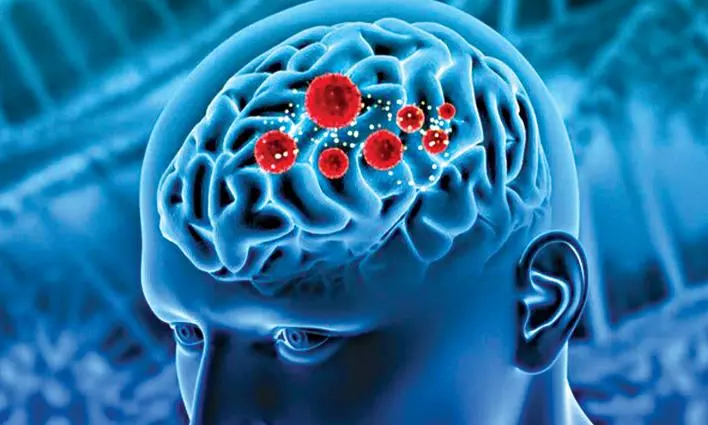Copyright deccanchronicle

No sooner did superstar Salman Khan reveal his brain aneurysm condition on The Great Indian Kapil Show than millions of shocked fans went into a tizzy, peddling half-baked information about brain aneurysms. However, doctors have stepped in to set the record straight and give the public a proper lowdown on brain aneurysms.Khan mentioned that he is living with a brain aneurysm and an arteriovenous malformation (AVM). Sallu Bhai quipped in his usual style: “Uske bawajood kaam kar rahe hain. (Despite all this, I’m still working).”But Salman isn’t alone in this. Across the starry world of entertainment, stars like Emilia Clarke, Neil Young, Sharon Stone, Kim Karda-shian, and Tamala Jones, to name a few, have all experienced the “brain ready to explode” symptoms of brain aneurysms. Brainstorming Session For those unaware, ‘Brain Aneurysm’ is a neurological condition. “Brain Aneury-sms happen when a blood vessel in the brain becomes weak and bulges out, often dueto high blood pressure, smoking, genetics or age,” says Dr Sachin Adukia, Senior Consultant Neurologist at Dr. LH Hiranandani Hospital from Mumbai.Think of your brain’s blood vessels as a network of thin wires carrying blood to certain sockets (aka brain cells). Now, if one weak spot starts to bubble, that little “bubble of trouble” is what doctors call a brain aneurysm. It is like a small balloon bulging from either side of these wires. Most of the time, that balloon just sits there, minding its own business. But if the wall that holds it gets too weak, it simply pops. Like a hose spraying water everywhere. In other words, a blood bleed. That's what most experts call a ‘ruptured aneurysm’.These bubbles can be dangerous, even life-threatening. Dr Sachin goes on to explain how most people don’t even feel anything until things worsen and there’s a real problem.Dr Sachin says, “A ruptured aneurysm is extremely life-threatening, often leaving side effects.” The need of the hour then is to get hold of treatment as quickly as possible, ideally before the bleeding starts. Dr Sachin quips, “Once bleeding starts, the damage cannot be fully undone or reversed.” Factors At Play While most aneurysms lie quietly, causing no disturbance, their rupture can be catastrophic- like a dam suddenly opening up. The result: a surge of blood flowing in or around the brain, a true “bloody river” within the skull. However, this tiny bulge doesn’t just appear without reason; it can range from a plethora of underlying causes.Dr Ghulam Muqtada Khan, Consultant & Surgeon, Neuro & Spine Surgery from Mumbai says, “People need to understand that lifestyle habits play a huge role.” Dr Ghulam opines that contributing factors such as uncontrolled stress, irregular sleeping habits, smoking, or excessive caffeine can elevate blood pressure, which quite often serves as a trigger.Dr Ghulam adds, “High pressure and demanding professions such as acting don’t directly cause aneurysms but can indirectly raise their risk by feeding into patterns of chronic stress and fatigue.”Not just that, there are identifying markers that present themselves as harmless symptoms. Dr Ghulam shares that dull headaches, pain around the eyes, blurred vision or drooping eyelids are common symptoms to look out for. He adds, “A sudden, intense 'thunderclap' headache (often the worst of its kind) can also signal a rupture which needs immediate emergency care.”Dr Sachin also adds how these tiny bubbles can affect one mentally. He says, “Many with this condition experience bouts of anxiety, fear, mood shifts or slower thinking patterns.” Dr Sachin opines that processing the emotional brunt of such a serious condition can be a draining and tedious task. What serves as a soothing elixir then is support from family and friends and counselling if need be.However, one can try and keep these bubbles away with a few cautious tweaks. Dr Sachin advises, “Keeping your blood pressure under control is key.” Other deductions could be avoiding smoking, limiting your alcohol consumption levels, setting regular exercise patterns and working on your sleep habits. He adds, “If you have a family history of such risks, regularly have check-ups done.” The Final Scenes Aneurysms don’t care about fame, fortune, or followers. But when stars speak, people listen, and that awareness can actually save lives. A brain aneurysm is nothing but a quiet reminder, a silent bubble of uncertainty and threat that reminds us that our bodies need the right attention and care. In a world where we chase noise, speed, glamour and success, these aneurysms whisper a sobering truth: that our strength lies in not how fast we move, but in how carefully we listen- to our bodies, our limits, and our health.So, the next time you see a celebrity with a brain aneurysm condition on screen, remember: some of their toughest scenes were shot off-camera, inside their own heads! Get A Head StartCelebrities who suffer from brain aneurysms include Salman Khan, Emilia Clarke, Tamala...



